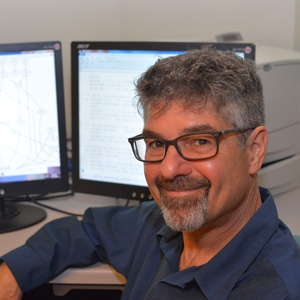
Research Project: Computational identification of possible combinations of existing drugs that reduce inflammation in AD with minimal side effects
The CART Fund is pleased to announce that Thomas J. Anastasio, Ph.D., University of Illinois, has been selected to receive a 2016 Alzheimer’s research grant in the amount of $50,000. The grant will be awarded on May 3, 2016 at the annual meeting of The CART Fund in Columbia, SC.
Chronic inflammation is as destructive for the brain as it is for the rest of the body, and all neurodegenerative diseases, including Alzheimer Disease (AD), have a prominent inflammatory component. Many researchers now believe that inflammation is one of the main causes of nerve cell loss in AD. The cells that produce inflammation in the brain are called microglia. Like other immune-system cells, the behavior of microglia is extremely complex.
Microglia have receptors on their surfaces that recognize amyloid-beta (Ab), which is the peptide molecule still considered to be central to AD pathogenesis. Depending on age and other factors, microglia exposed to Ab can become either neurotoxic or neuroprotective. Neurotoxic microglia secrete inflammatory factors that damage and ultimately kill neurons. Neuroprotective microglia, in contrast, remove excess Ab and release factors that promote nerve cell survival and growth. A treatment that would switch microglia from the neurotoxic to the neuroprotective state could greatly retard AD-associated neurodegeneration, if not halt it entirely. The problem is in knowing how to make that switch.
Microglia are truly complex systems. They have many different kinds of receptors, that initiate many different cell signaling cascades, that activate many different transcriptional regulators, that regulate the production and release of many different factors, that finally affect nerve cells and also affect the same microglia that release them. Microglial behavior is governed by the interaction of a great many different molecules, and controlling that behavior will probably require alteration of those molecular interactions at many different points.
The purpose of this CART-funded project is to make a computer model of the molecular interactions that govern the behavior of microglia, and then undertake a computational drug screen to see which of the million-plus combinations of twenty already approved drugs are the most effective in switching microglia exposed to Ab from the neurotoxic to the neuroprotective state. The best combinations could be tested in animals and then in clinical trial, possibly leading to an effective means of reducing inflammation in the AD brain.
The Coins for Alzheimer’s Research Trust Fund (CART) is a project of the Rotary Clubs of North America. Founded in 1995 in Sumter SC, CART provides financial support for Alzheimer’s research projects that are yet to be supported by extensive preliminary data but have the potential to substantially advance biomedical research.

